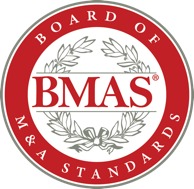Time is of the Essence
By Bill Blandford, Board of M&A Standards
One of the key factors in finding and implementing M&A deals involves the use of speed. Go too slow, and the deal may no longer be worth it. But go too fast, and issues not uncovered in due diligence can cause issues in integration that will keep the deal from realizing the targeted synergies.
Examples abound of deals that fail to achieve their targets because of insufficient time during due diligence, so we will focus on the following areas that are affected by going too fast during due diligence and hitting speed bumps in achieving deal synergies.
Anything not verified during Due Diligence. One of the corners cut when going too fast is not digging into the details of each key area. Deal makers sometimes feel safe assuming that what was presented does not have any issues, but that is a risky practice. Traditionally, the examination of financials, sales and operational areas have been done in great detail during in Due Diligence. And recent trends indicate that other areas, especially relative to digitization, need to be treated with equal scrutiny.
Cybersecurity. Significant analysis of cybersecurity by an acquiring business is now accepted as essential in determining the risks and value of a deal, as demonstrated by the Verizon’s acquisition of Yahoo. The discovery of two massive data breaches reduced Yahoo’s sell price by $350 million and launched an SEC investigation, but the outcome could have been much worse.
The product as well as the process. When a product or service is digitized, the examination of the digital environment should include detailed review of both the product and the process. An example might be the design and implementation of error handling, which in itself might be present but not adequate to satisfy customers, especially if the acquiring business emphasizes quality with their customers. This could require a massive rewrite and re-implementation of the product or service being acquired, increasing the cost of integration and delaying the achievement of product or service synergies.
IT infrastructure. Speeding through Due Diligence might cause insufficient analysis of the IT infrastructure and any restrictions due to contracts with third parties. The existence of an IT support agreement with contract termination penalties, for example, could increase the integration costs or delay the integration timeline of achieving deal synergies.
Physical security. The location or lease agreement of the building can be another problem, especially if the company requires highly restricted areas. It may not be possible to change network providers or physical layouts to provide proper security, and that need becomes crucial if both acquired personnel and the seller’s remaining personnel will co-exist in the same building after Day 1.
In summary, though speed is key in due diligence, going too fast – especially when it comes to digitization – can derail the achievement of timely synergies and even jeopardize the entire deal. Experienced acquirers know the value in training their MA&D teams to achieve thorough Due Diligence at just the right speed.
 About Bill Blandford:
About Bill Blandford:
Bill has participated in over 50 transactions including the de-merger of Motorola, which led to the creation of two separate companies within Motorola. He successfully integrated more than 25 acquisitions and led the divestiture of 15 businesses. Bill also has extensive experience in divestitures, spin-offs, and internal reorganizations across the globe with a primary focus on IT.

